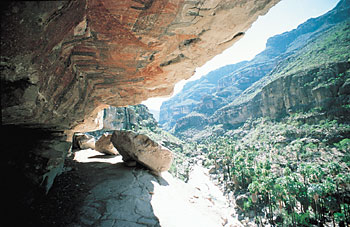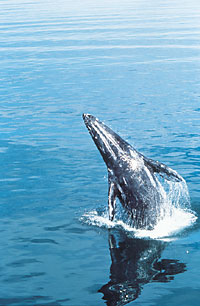![[OCEAN OASIS introduction]](../images/nav-ocean.gif)
![[Desert & Sea Photography Exhibition]](../images/nav-desert.gif)






![[space]](images/navs-space.gif)
![[Site Index]](../images/nav-index.gif)
|
A Look at Humankind: People and the Peninsula
La Perspectiva de los Humanos: La Península y sus Pobladores
Perseverance and ingenuity have enabled humans to survive in the harshness of the peninsula. It is unknown when the original settlers arrived in Baja California. They hunted and gathered food as nomads in this arid land as early as 12,000 years ago, as attested by richly painted caves. Much later, Europeans landed on these shores looking for fame and fortune, or to bring their faith to the native people. The newcomers and their descendants populated the peninsula, albeit sparsely, making a living by ranching, farming, mining, and fishing. Today, as populations and tourism increase, we explore the boundary between us and the natural world, seeking understanding and a relationship that will sustain our species and the beautiful diversity of the peninsula.

Cave painting perspective, Sierra San Francisco
Enrique Hambleton
Layers of figures adorn caves and high overhangs above a steep canyon wall. When missionaries inquired how the paintings got there, the native people answered that they were painted by an ancient race of giants. Images of the cave paintings are reproduced with the permission of the
National Institute of Anthropology and History of Mexico.
 Gray whales in Magdalena Bay
Gray whales in Magdalena Bay
Fulvio Eccardi
After the longest migration of any mammal, gray whales enter the bays along the west coast of Baja California to mate and give birth. Discovery of this fact by 19th century whalers led to the near destruction of the species. Today, under protection by international law, gray whales are a conservation success story; present numbers approach those before whaling. Whale watching benefits local economies while it lifts the human soul.
|
![[Desert and Sea: Visions of Baja California - El Desierto y el Mar: Imagenes de Baja California]](images/bnr-desertandsea-anim.gif)

![[Desert and Sea: Visions of Baja California - El Desierto y el Mar: Imagenes de Baja California]](images/bnr-desertandsea-anim.gif)
